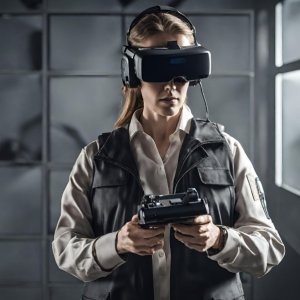Gaming represents one of the most crucial driving forces behind recent virtual reality (VR) hardware and software innovations—a symbiosis set to wholly transform interactive experiences into the spatial computing era.
The Early Days: Primitive Tech Meets Blockbuster Ambition
The earliest attempts at consumer VR gaming in the early 90s offered a tantalizing glimpse into future possibilities. Despite the promise of expansive worlds with primitive headsets and controllers from trailblazers like Nintendo, laggy frame rates, cables, and cost challenges inhibited widespread gaming utility and adoption.
Still, the hunger for immersive gaming persisted. Developers toyed with experimental concepts blending innovative mechanics with accessible franchises to indoctrinate a wider base into embracing VR gameplay viability when the technology matured.
The Headset Revolution Fuels Content Explosion
The mid-2010s saw the commercial launch of higher-grade headsets like the Oculus Rift and HTC Vive that solved pain points around latency and tracking through bespoke display and sensor innovations. This spurred sizable spikes in multi-dimensional narrative experiences leveraging the hardware’s capabilities.
Titles like Beat Saber gained cult status through unique gesture inputs only possible in VR. Skyrim and Resident Evil came to life breathing fresh longevity into popular RPG and horror IPs respectively. With install bases surging into the millions, studios now pursue VR development far more aggressively.
Pushing the Hardware Frontier
As gaming mechanics and in-headset rendering complexities multiply, the domain is spurring some of VR’s fastest core hardware innovations today. Nvidia’s graphic cards and headsets doubling display clarity race to maintain gaming’s exponential feature demand. Emerging face and eye tracking allow unprecedented expressions embedding gamers within events as active participants rather than observers—enabled by AI-mediated generation.
Multiplayer environments host expansive global participant pools through cloud infrastructure as 5G reduces latency constraints. Real-time photorealistic CGI integration inches closer to indistinguishable virtual reality. It may be gaming yet again ushering the next paradigm shift in technological experiences—only this time transporting users across realities rather than just on screens.






